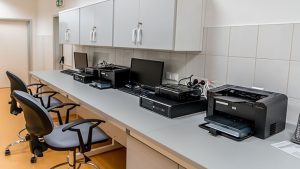
In fact, 34% of SME owners experiencing late payments claimed that they had to rely on overdraft facilities to cover their monthly costs in 2020. One-in-seven businesses were also left unable to pay their employees due to cash flow issues.
The challenge is often made worse through mounting maintenance costs. It commonly occurs when businesses scale quickly and invest heavily in new office equipment, plant machinery, or vehicles.
Fortunately, leasing can help to reduce your business’s maintenance costs and contribute to a healthier bottom line. Here’s how:
Making the Initial Case for Leasing
There’s no doubt that the ownership of company equipment and corporate assets contribute significantly to rising maintenance costs. The reason for this is simple. You are directly responsible for the cleaning, preservation and performance of any corporate assets you’ve bought and paid for.
It can include everything from coffee machines and office equipment to a commercial vehicle fleet. This fleet will usually play a pivotal role in delivering your company’s primary source of income.
It’s therefore critical that such assets are inspected and maintained regularly, creating significant maintenance costs in the form of both scheduled and unscheduled repairs.
A more cost-effective solution is to lease essential business equipment. This immediately outsources the investment cost to the owners (the finance partner) and the maintenance costs to the supplier. It will reduce your business’s operational cost base for the duration of the lease.
Nowadays, suppliers also leverage intuitive IoT technology to monitor performance and offer advice on optimal usage, further streamlining asset management. It also enables your firm’s senior leadership to focus on more strategic elements of the business.
What’s more, the leasing amounts payable are fixed and regular. That enables your finance teams to forecast outgoings more accurately while removing the risk of large bills for breakdowns or broken parts.
What Are the Most Popular Leasing Models?
The most common leasing models see businesses strike arrangements directly with asset manufacturers, merchant suppliers or independent lease providers.
These models are particularly straightforward and cost-effective. Why? They minimise handling and administration costs between the asset being produced and the point where your company starts paying to use it.
This is particularly true when working with independent lease providers. These organisations can provide most of your lease portfolio and enable you to ease your administrative burden further by reducing the number of companies you have to deal with.
These models should also translate into less complex and more competitive quotes, especially when there are multiple merchants or suppliers of the asset in question.
At the same time, you’ll be able to liaise directly with suppliers to facilitate repairs, schedule maintenance and organise the replacement of broken parts. You can also rely on their expertise and insight to optimise performance over time.
These factors contribute to a far more competitive and economically viable agreement. One which doesn’t compromise on the performance of assets and can actively improve your company’s bottom line.
Benefitting From Improved Maintenance Reporting and Analytics
As we’ve already touched on, suppliers now utilise IoT technology to provide significantly improved maintenance reporting and analytics to clients.
Certainly, the ability to collate and analyse larger amounts of granular data is proving to be a tremendous benefit for businesses across a broad range of applications. In the case of asset and equipment management, it helps suppliers track usage and performance in real-time and enables them to make recommendations to users.
This definitely leads to improved decision making. It can help create optimised maintenance schedules while helping suppliers identify issues before they become too problematic or costly to resolve.
Ultimately, this means that leased equipment will experience far fewer failures or breakdowns over time. For your business, it means considerably less disruption and higher productivity levels.
The Bottom Line
Whether your business operates a large commercial vehicle fleet, office equipment or plant machinery, the cost of maintaining these assets can really compromise cash flow management over time.
Leasing directly from a merchant supplier, manufacturer or independent lease provider definitely provides a more cost-effective solution in such instances. At the same time, it will lower admin costs and optimise usage for the duration of the agreement.
To find out more on how leasing can benefit small businesses in particular, check out Grenke’s guide.

























